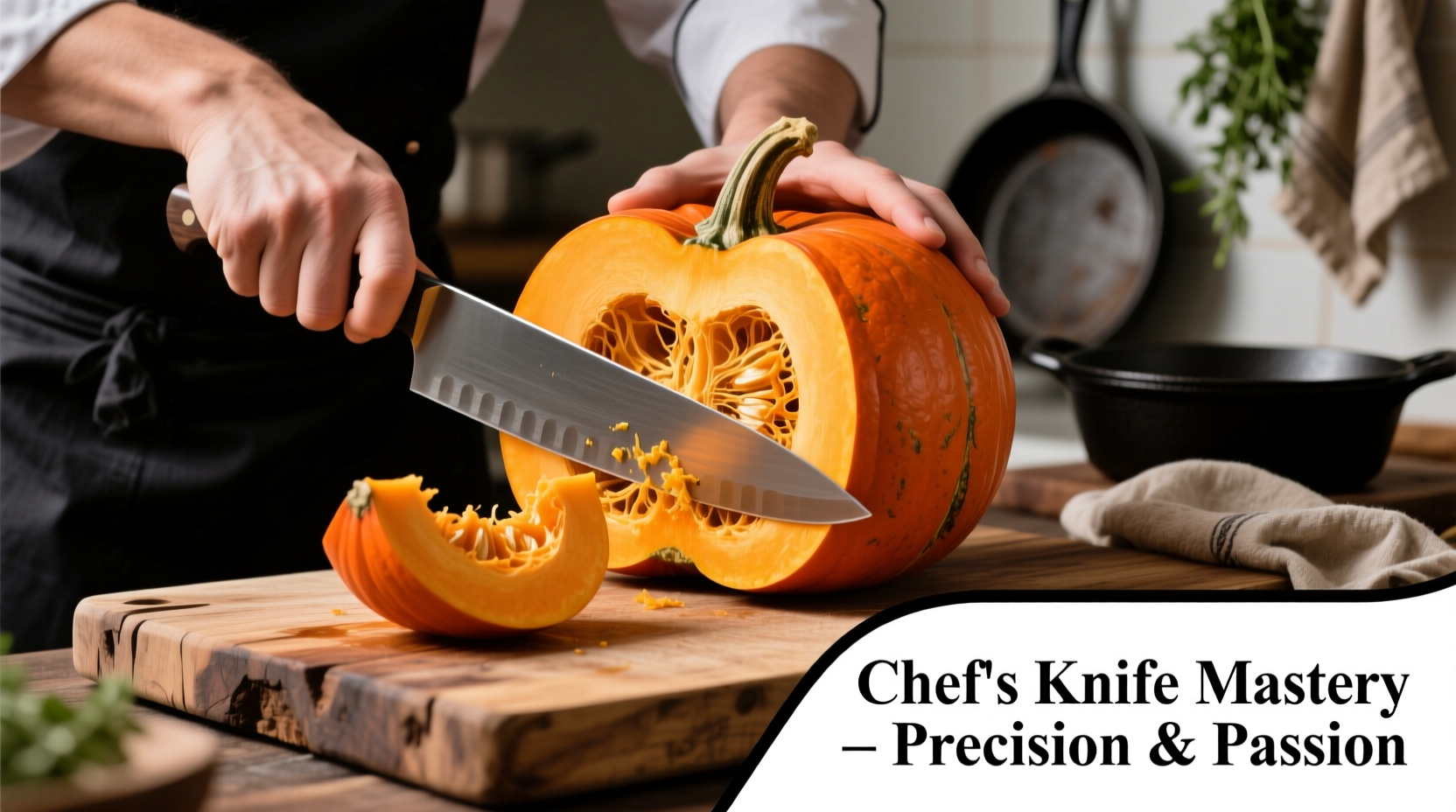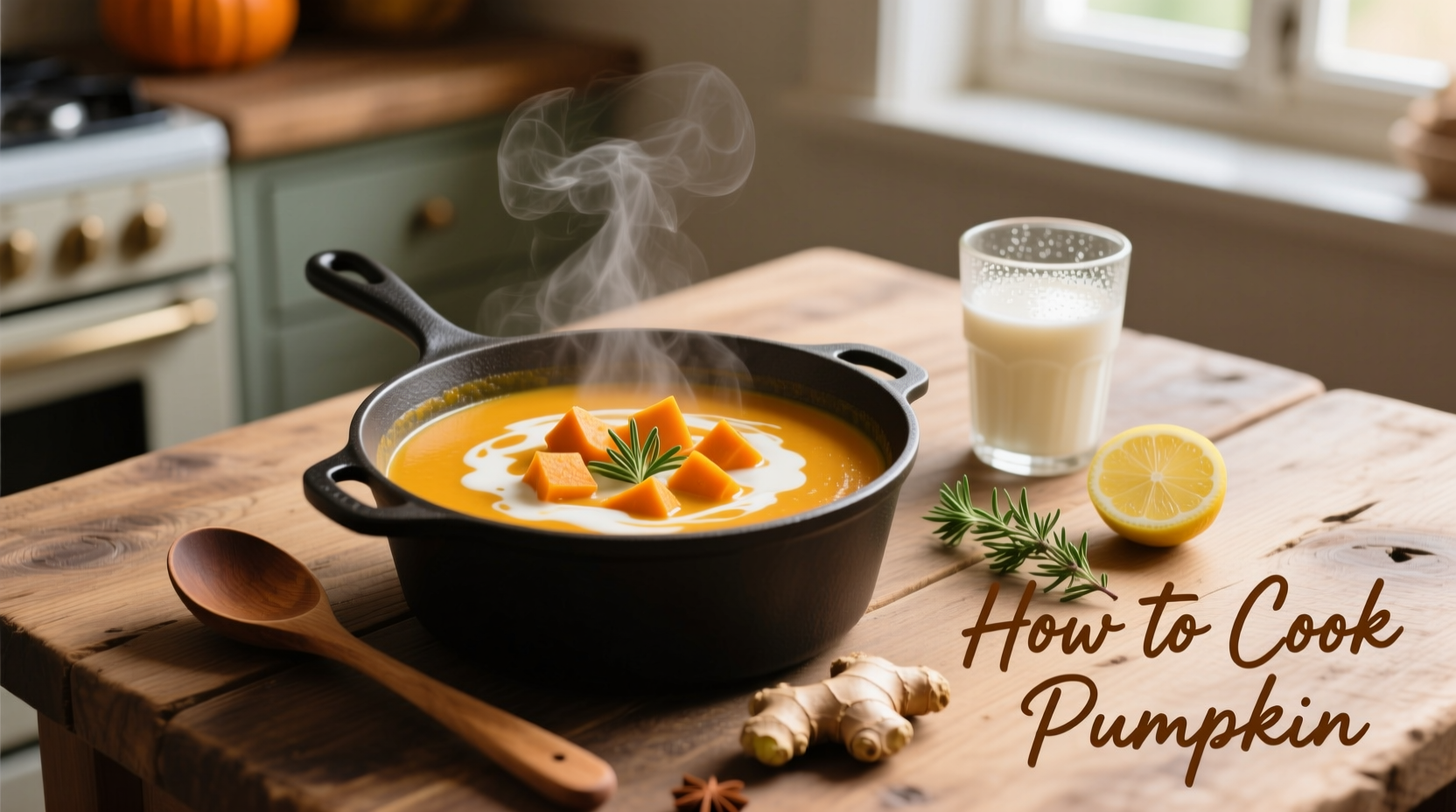Learn to cook pumpkin perfectly with this step-by-step guide: Select a sugar pumpkin, cut carefully using a sharp chef's knife, roast at 375°F for 45-60 minutes until fork-tender, then puree or cube for soups, pies, and side dishes. This comprehensive method yields flavorful, versatile cooked pumpkin every time.
Discover why pumpkin deserves a permanent spot in your seasonal cooking repertoire. Whether you're preparing Thanksgiving classics or weeknight meals, properly cooked pumpkin delivers rich flavor and nutritional benefits that store-bought alternatives can't match. This guide covers everything from selecting the right variety to storing leftovers safely.
Why Proper Pumpkin Preparation Matters
Many home cooks struggle with pumpkin because they start with the wrong variety. Carving pumpkins (often labeled “jack-o-lantern” pumpkins) contain more water and less flavor than sugar pumpkins specifically bred for cooking. According to the University of Minnesota Extension, sugar pumpkins have denser flesh with higher sugar content, yielding better texture and flavor in cooked dishes.
| Pumpkin Type | Best For | Flavor Profile | Texture After Cooking |
|---|---|---|---|
| Sugar Pumpkin | Pies, soups, roasting | Sweet, earthy | Firm, smooth puree |
| Carving Pumpkin | Decorations only | Watery, bland | Soggy, stringy |
| Butternut Squash | Substitute for pumpkin | Nutty, sweet | Smooth, creamy |
Safe Cutting Techniques for Rock-Hard Pumpkins
Cutting pumpkin safely requires proper technique. Food safety experts at the USDA Food Safety and Inspection Service recommend these steps:
- Place pumpkin on non-slip surface with stem facing up
- Use a sharp 8-inch chef's knife (dull knives slip more easily)
- Carefully cut off top 1 inch below stem
- Slice vertically from top opening to base
- Use hammer to gently tap knife through stubborn sections
- Work in sections rather than trying to cut entire pumpkin at once
Never position your hand in the path of the knife. Consider microwaving whole pumpkin for 2-3 minutes to soften before cutting if you're uncomfortable with manual cutting.

Four Reliable Cooking Methods Compared
Professional chefs use different cooking techniques depending on the final application. Here's how each method affects flavor and texture:
Roasting (Best for Flavor Concentration)
Preheat oven to 375°F. Place cubed pumpkin (1-inch pieces) on parchment-lined baking sheet. Drizzle with 1 tablespoon olive oil per pound of pumpkin. Roast 45-60 minutes, flipping halfway, until fork-tender and caramelized at edges. This method concentrates natural sugars through the Maillard reaction, creating deeper flavor than boiling.
Boiling/Steaming (Best for Purees)
Cut pumpkin into 2-inch cubes. For boiling: Cover with cold water, bring to gentle simmer (not rolling boil), cook 15-20 minutes until tender. For steaming: Place in steamer basket over 1 inch boiling water, cover, cook 20-25 minutes. Steaming preserves more nutrients according to research published in the Journal of Food Science and Technology.
Slow Cooking (Best for Hands-Off Preparation)
Add cubed pumpkin to slow cooker with 1/4 cup water. Cook on low 4-6 hours until tender. This gentle method preserves texture while requiring minimal attention. Ideal when oven space is limited during holiday cooking.
Pressure Cooking (Best for Time Savings)
Place 3 cups cubed pumpkin with 1 cup water in electric pressure cooker. Cook at high pressure 8 minutes, followed by 10-minute natural release. Yields perfectly tender pumpkin in under 20 minutes total.
Pro Tips for Perfect Results Every Time
Professional chefs consistently achieve better results by following these techniques:
- Add acid after cooking: A splash of lemon juice or apple cider vinegar enhances sweetness without making pumpkin taste sour
- Don't skip the resting time: Let roasted pumpkin sit 10 minutes before pureeing for better texture
- Season in layers: Add 1/4 teaspoon salt per pound before cooking, then adjust after
- Reserve the seeds: Rinse, toss with oil and salt, roast at 300°F for 20 minutes for delicious snack
Storage Guidelines for Maximum Freshness
Proper storage extends pumpkin's shelf life significantly. Follow these USDA-recommended practices:
- Refrigeration: Store cooked pumpkin in airtight container for 5-7 days
- Freezing: Portion puree into 1-cup containers or ice cube trays, freeze solid, then transfer to freezer bags. Keeps 10-12 months
- Never refreeze: Once thawed, use within 3-4 days
- Signs of spoilage: Discard if you notice mold, sour smell, or slimy texture
Common Mistakes That Ruin Pumpkin Dishes
Avoid these frequent errors that compromise flavor and texture:
- Using carving pumpkins: Results in watery, bland final product
- Overcooking: Creates mushy texture that won't hold shape in dishes
- Skipping the draining step: After boiling, let pumpkin drain in colander 10 minutes to remove excess moisture
- Adding too much liquid: When making puree, start with minimal liquid and add only as needed
Creative Ways to Use Cooked Pumpkin
Move beyond traditional pies with these chef-recommended applications:
- Pasta sauce: Blend roasted pumpkin with sautéed garlic, sage, and vegetable broth
- Breakfast boost: Stir puree into oatmeal or pancake batter
- Healthy swaps: Replace half the oil in baked goods with pumpkin puree
- Savory sides: Toss roasted cubes with maple syrup, pecans, and thyme











 浙公网安备
33010002000092号
浙公网安备
33010002000092号 浙B2-20120091-4
浙B2-20120091-4